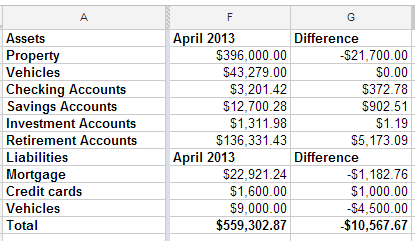Please email me at:
Or use the form below.
[contact-form 1 “Contact form 1”]
The no-pants guide to spending, saving, and thriving in the real world.

A few weeks ago, I discovered the queue at my public library’s website. The process is simple: Select your books, wait a few days, then pick them up. They are available from any library in the county, delivered to my local library. That’s awesome. Much more convenient-and cheaper-than Amazon.
So I moved a couple of pages of my Amazon wish-list into the library’s queue.
I must not have been thinking, because two days later, I got an email telling me that 19 books were ready to be picked up and 10 more were in transit.
In this county, each checkout is good for 21 days. For items that don’t have a waiting list, you can reserve 3 times. That’s 12 weeks for 29 books. Hopefully, I’m up to the challenge. Please keep in mind, I’m a father of three, two of whom are in diapers, and I’m married, and I have a full time job.
I have frugally blown every second of spare time for months.
Update: This was another post written in advance. When all of the books came in, I suspended my request list. Little did I realize, the suspension cancels itself after 30 days. That was 30 more books. Whee!

I had an email exchange with my close friend and business partner earlier this week.
“I get ideas but think they are probably stupid. Okay, I have some ideas. Again, I get scare you’ll think I’m reaaaally dumb.”
My response?
“No ideas are stupid. You start filtering **** like that, we’ll never find the ******* gold.
Brainstorming has no filter. You never know where a “stupid” idea might lead or what associations it might trigger.”
When you are trying to generate new ideas, applying a filter like “That sounds stupid” won’t get you anywhere. It’s idea suicide.
Could a discussion on the possibilities of becoming a lawn gnome distributor lead to becoming a successful manufacturer of combat gnomes?
Brainstorming involves turning off your stupid filters and running with it. Keep a recorder or a notebook handy and keep track of everything. Go off on tangents and see where they lead. Maybe they’ll lead to the gold.
The one thing you can’t do while brainstorming is criticize. If you start shooting down ideas, you are destroying the opportunity to find greatness. Even if an idea is impractical, build on it. There has to be an angle that becomes worthy of consideration. On the off-chance that there’s not, run with it anyway. It’s an exercise in creativity.
I regularly send my friend emails with potential business ideas. Most of them come to nothing, but once in a while, something clicks and we launch a successful venture together. If I were filtering ideas because they might be stupid, we might not have some of the projects we’ve got.
In addition to random & odd emails, I’ve got a notebook of some kind with me everywhere I go to record any passing idea I may have. In my car, I use a voice recorder. I periodically review everything I’ve noted and copy most of it into evernote.
Someday, those pieces may come together into a billion dollar idea.
How do you generate ideas? Do you bounce ideas off of friends or get drunk and shuffle a Trivial Pursuit deck into a Monopoly game?

Dispute resolution has to do with the impartial rectification of conflict between individuals or parties. More specifically it is the utilization and execution of methods that are designed to resolve conflicts. In a case in which there is a dispute between people or groups, often times a third, neutral, party is selected to be an impartial representative for the disputing persons. Although dispute resolution can refer to resolutions both in and out of the court, it mainly applies to disputes that are settled outside of the legal framework of the judicial system.
Two of the most common types of dispute resolution are known as adjudicative and consensual. While adjudicative resolution requires a third party to mediate the outcome, such as a judge or jury, and usually involves some form of litigation, consensual resolution is the attempt to solve the issue between the two disputing parties without involving a third party, although at times a neutral arbitrator will be selected to preside over the case, though they will often be there not so much for authoritative purposes but more as a council to keep things fair. There is also a third upcoming type of dispute resolution, online dispute resolution, or ODR, which has become more popular in recent years with the rise of the internet’s prominence in daily life, but it is mainly the application of traditional consensual resolution practices, only adapted to the online environment.
Many disputes can be solved simply through adherence to the law, however, sometimes issues arise that the legal structure isn’t equipped to handle, and so a third party is chosen to resolve the conflict. These types of conflict fall within the jurisdiction of the law and so will be relegated to the political system for arbitration. Judicial resolutions are conflicts that will be, hopefully, settled by the court. In the United States, this is often the case with dispute resolution. This form of resolution usually involves litigation. This is the use of outside individuals to argue for or against the disputing parties. In a courtroom, the lawyers are the litigators, while the judge and jury listen to the arguments in order to come to their decisions.
Extrajudicial resolution is non-court settlement of conflict. Also known as alternative dispute resolution, or ADR, this is what people are usually referring to when discussing dispute resolution. ADR is usually more efficient, cost effective, and less time consuming than judicial resolutions. Extrajudicial resolution concerns various types of ways to settle conflict. These include arbitration and mediation. In arbitration neutral individuals will listen to both sides of an argument and render a decision based on evidence. Unlike the court systems, this proceeding doesn’t necessarily include a binding agreement with the parties.
Mediation is used in extrajudicial resolution as a way to open a dialogue between conflicting parties. The idea is to use a trained neutral third party in order to come up with unique solutions to solve the issue. A mediator is trained to be both an effective negotiator as well as an excellent communicator. A mediator is like a judge in that they cannot take sides, and they do not give legal advice either. Their decisions are not obligatorily followed, though they tend to be followed since the mediators are trained to make decisions that benefit both parties.
The techniques used in dispute resolution can be used both in and outside of the court room. It is often used by individuals who wish to speed up the process by not having to get into the political system. However, they are useful in many cases where individuals wish to come to the most beneficial agreement for all the parties involved.
When my mother-in-law died, we went through all of her accounts and paid off anything she owed.
The Discover card she’d carried since the 80s–a card that had my wife listed as an authorized user–had a balance of about $700. We paid that off with the money in her savings account. They cashed out the accumulated points as gift cards and closed the account.
A few months ago, we decided it was time to buy an SUV, to fit our family’s needs. We financed it, to give us a chance to take advantage of a killer deal while waiting for the state to process the title transfer on an inherited car we have since sold.
Getting good terms was never a worry. Both of us had scores bordering on 800. Since our plan was to pay off the entire loan within a few months, we asked for whatever term came with the lowest interest rate.
Then the credit department came back and said that my wife’s credit was poor. I chalked it up to a temporary blip caused by closing the oldest account on her credit report and financed without her. No big deal.
Since we decided to rent our my mother-in-law’s house, we’ve discussed picking up more rental properties. That’s a post for another time, but last week, we went to get pre-approved for a mortgage. During the process, the mortgage officer asked me if my wife had any outstanding debt that could be ignored if we financed without her.
Weird.
A few days ago, we got the credit check letter from the bank. Her credit score? 668.
What the heck?
I immediately pulled her free annual credit report from annualcreditreport.com, which is something I usually do 2-3 times per year, but had neglected for 2012.
There are currently two negatives on her report.
One is a 30 day late payment on a store card in 2007. That’s not a 120 point hit.
The other is an $8 charge-off to Discover. As an authorized user. On an account that was paid.
Crap.
We called Discover to get them to correct the reporting and got told they don’t have it listed as a charge-off. They did agree to send a letter to us saying that, but said they couldn’t fix anything with the credit bureaus.
Once we get that letter, it’s dispute time.

I looked back at the spreadsheet I use to track my net worth, and realized that I have been filling it out quarterly, though I can’t say that has been on purpose. Apparently, I get an itch to see my score about four times per year.
This quarter is the first time in a long time that my net worth has dropped. We got our property tax statements last week and found out that our houses have dropped a combined $21,700. Since we’re not planning to sell, that doesn’t matter much.
What’s interesting to me is that, even though our property values dropped $21,700, our total net worth only fell $10,567. We’ve been hustling trying to get the Tahoe paid off. It’s going a little bit slower than I had hoped, but it’s progressing nicely.
I do feel good that, even if I would have been focusing on my mortgage, I still would have lost the mortgage race. That means my misplaced priorities of acquiring more debt to snatch a fantastic deal didn’t cost me the race. Now, I’ll be forced to take a vacation in Texas, coincidentally in the same town as my wife’s long lost brother. I think we can make that work.
I rounded off the credit card and vehicle totals because one is used every day and paid off every month and the other has a steady stream of money getting thrown at it, so the numbers change often.
All in all, I don’t have any room to complain. I am looking forward to paying off the truck and focusing on the mortgage. We could swing quadruple payments, which would pay off the house shortly after the new year starts.
